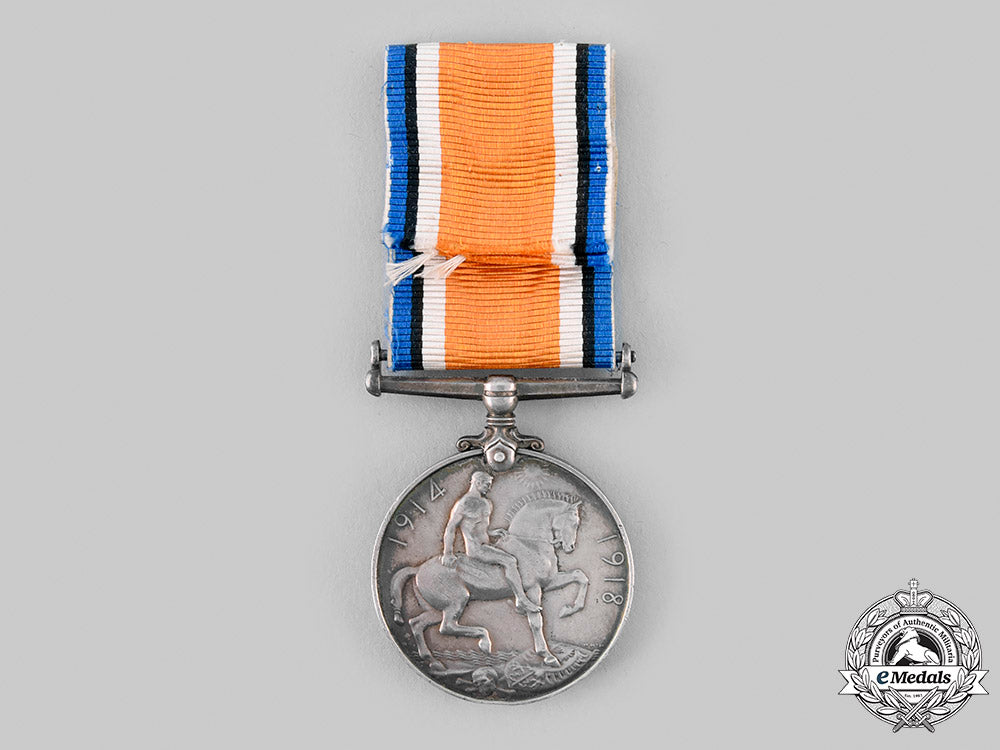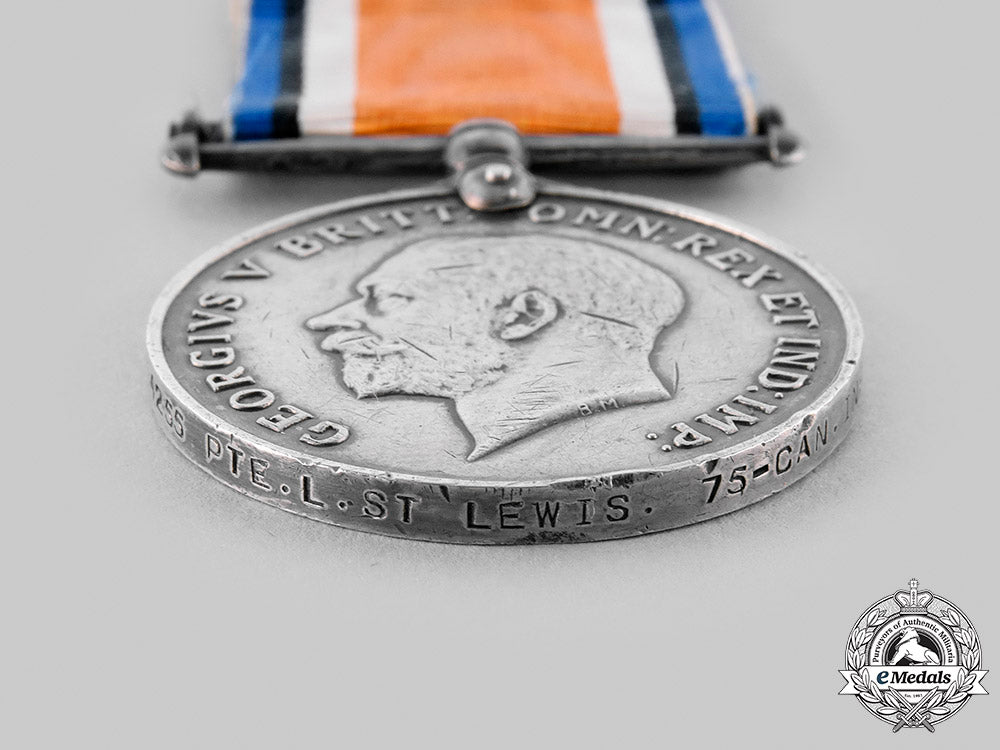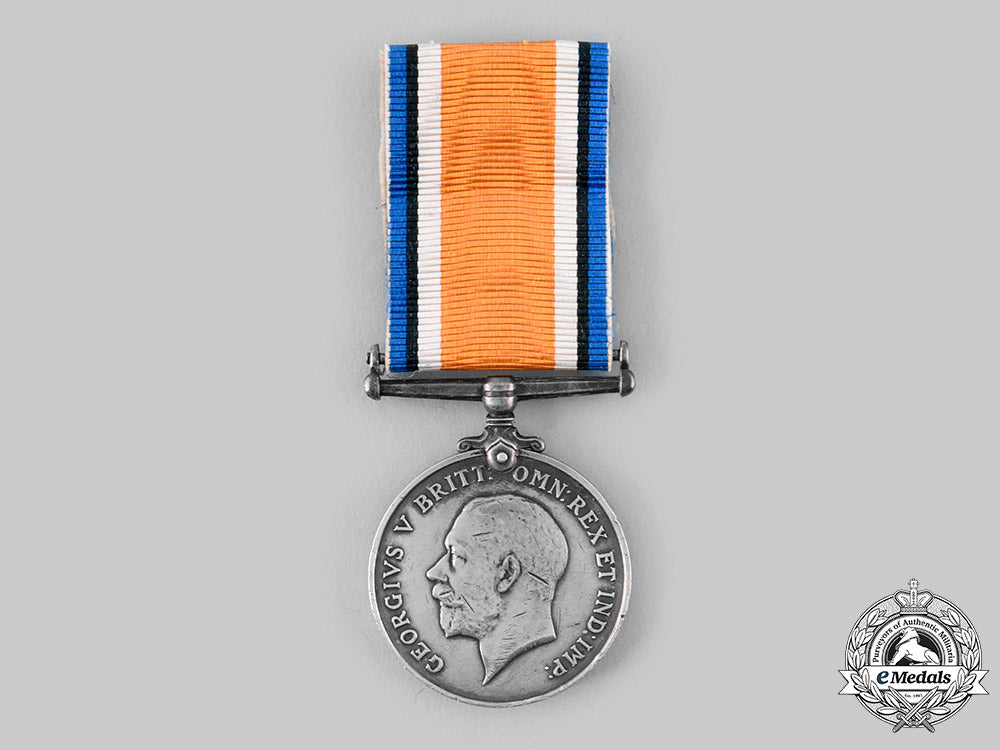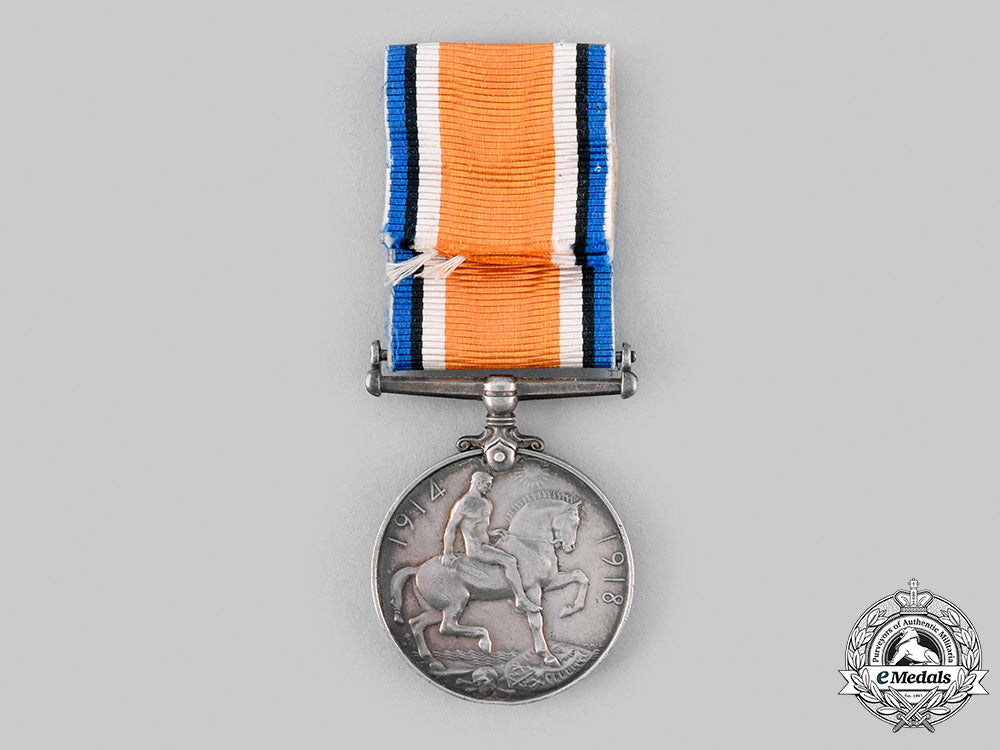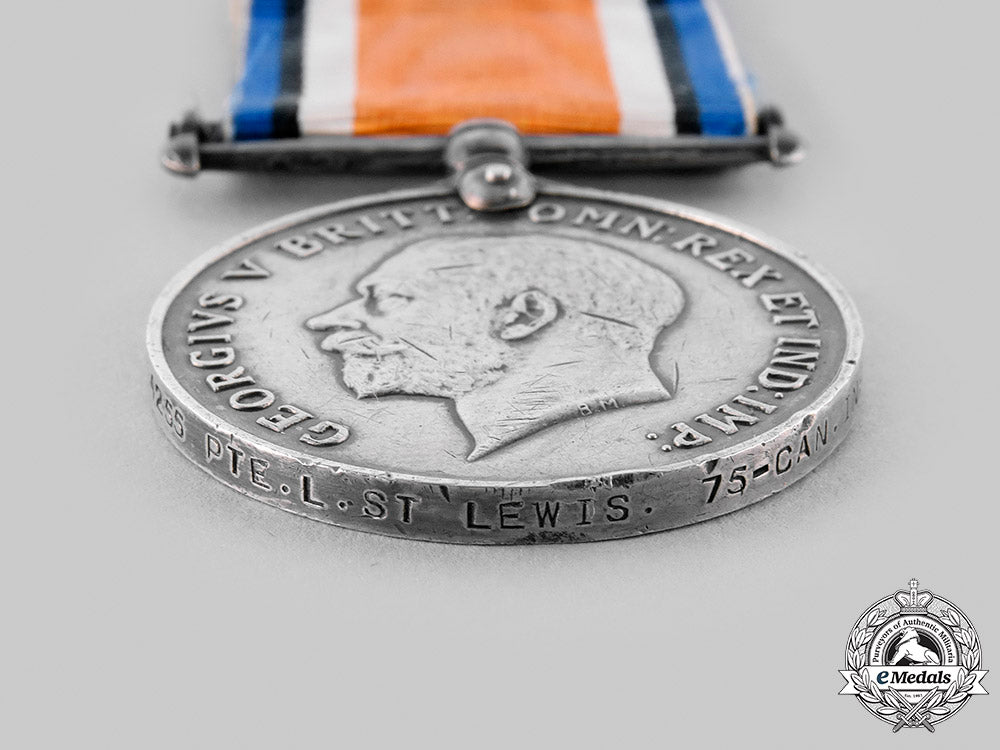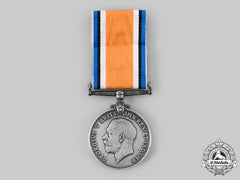
LOADING ...
In response to evolving domestic opinion, eMedals Inc has made the conscious decision to remove the presentation of German Third Reich historical artifacts from our online catalogue. For three decades, eMedals Inc has made an effort to preserve history in all its forms. As historians and researchers, we have managed sensitive articles and materials with the greatest of care and respect for their past and present social context. We acknowledge the growing sentiments put forth by the Canadian public and have taken proactive actions to address this opinion.
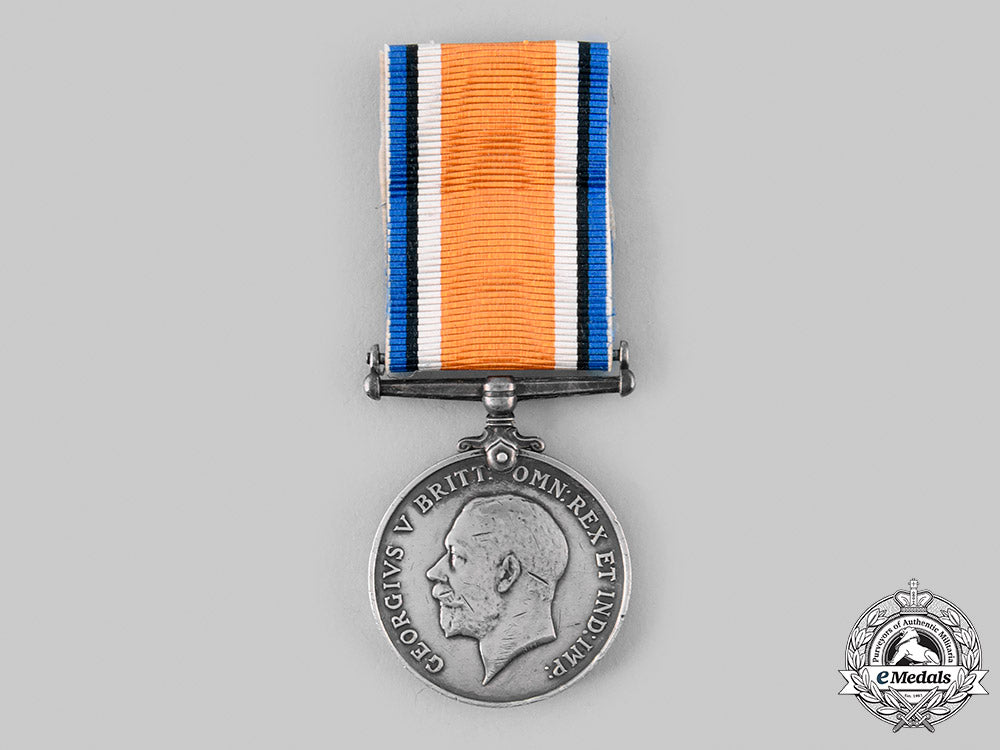
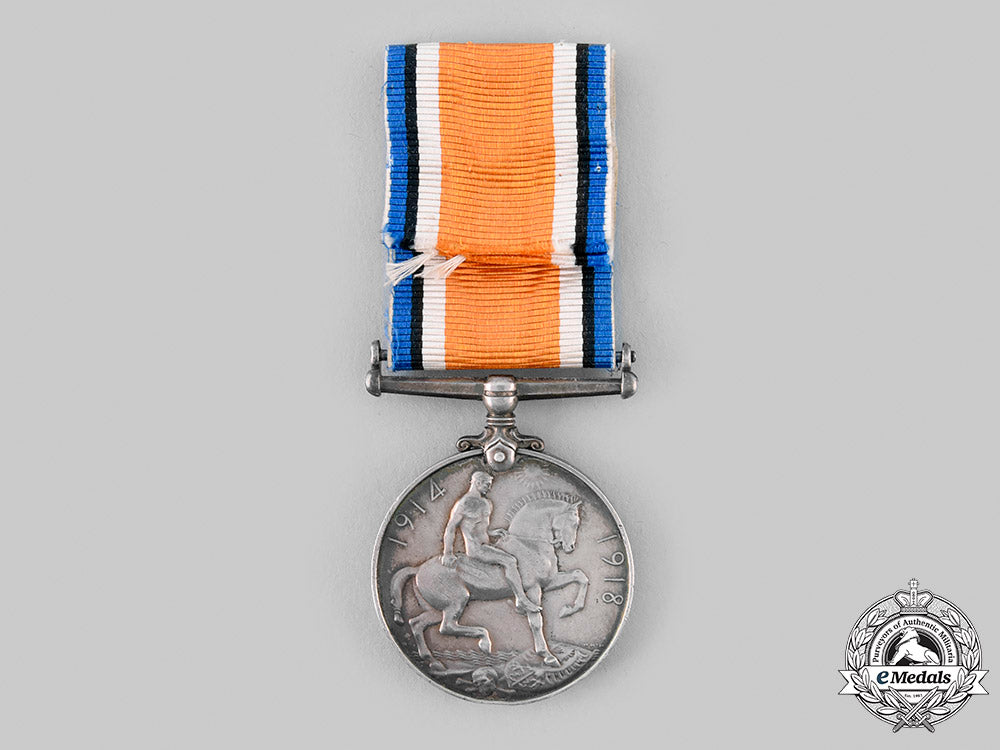
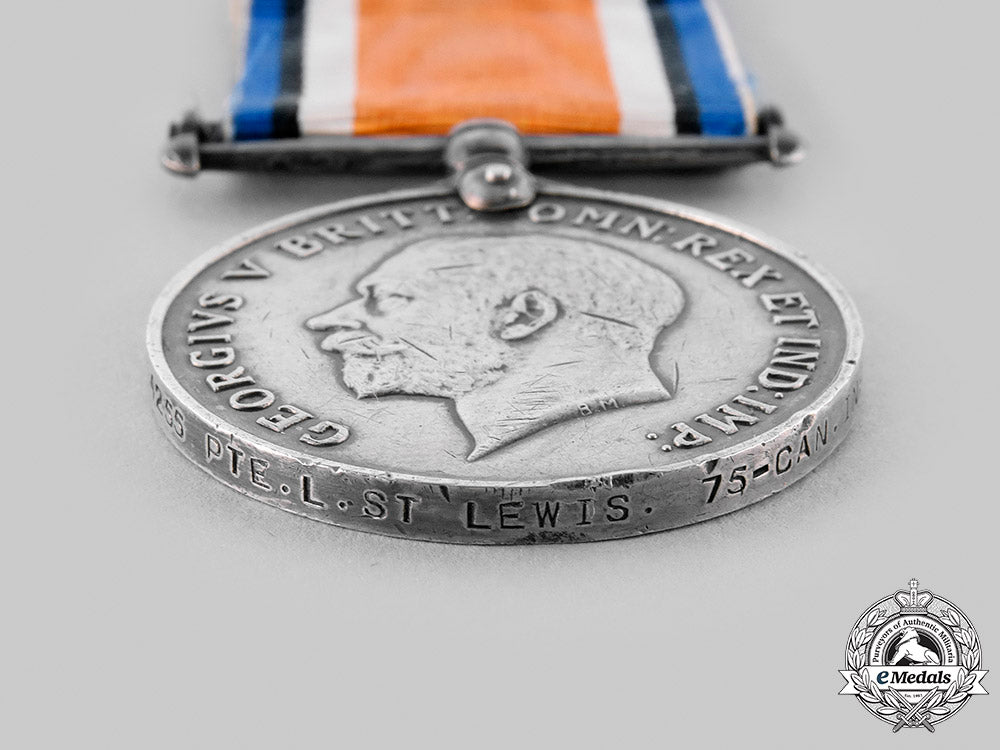
Canada, Cef. A British War Medal, To Private Leo St. Lewis, 75Th Infantry Battalion, Canadian Army Service Corps
Canada, Cef. A British War Medal, To Private Leo St. Lewis, 75Th Infantry Battalion, Canadian Army Service Corps
SKU: ITEM: C6134
0% Buyer's Premium
Current Bid:
Your Max Bid:
Bid History:
Time Remaining:
Couldn't load pickup availability
Shipping Details
Shipping Details
eMedals offers rapid domestic and international shipping. Orders received prior to 12:00pm (EST) will be shipped on the same business day.* Orders placed on Canadian Federal holidays will be dispatched the subsequent business day. Courier tracking numbers are provided for all shipments. All items purchased from eMedals can be returned for a full monetary refund or merchandise credit, providing the criteria presented in our Terms & Conditions are met. *Please note that the addition of a COA may impact dispatch time.
Shipping Details
eMedals offers rapid domestic and international shipping. Orders received prior to 12:00pm (EST) will be shipped on the same business day.* Orders placed on Canadian Federal holidays will be dispatched the subsequent business day. Courier tracking numbers are provided for all shipments. All items purchased from eMedals can be returned for a full monetary refund or merchandise credit, providing the criteria presented in our Terms & Conditions are met. *Please note that the addition of a COA may impact dispatch time.
Description
Description
(514255 PTE. L. ST LEWIS. 75-CAN.INF.). Naming is officially impressed. Edge nicks, bruised, contact marks, replacement ribbon, near fine. Accompanied by copies of his Index Cards, Attestation Paper, Service Records, Medical Records, Pay Records and Discharge Certificates.
Footnote: Leo St. Lewis was born on July 23, 1894 in Ottawa, Ontario, the son of Joseph St. Lewis and Alice St. Lewis of Collingwood, Ontario. He was a resident of Collingwood when he signed his Attestation Paper as a Private (514255) at the No. 2 Canadian Army Service Corps Training Depot in Toronto, Ontario, on April 10, 1917, at the age of 22, naming his next-of-kin as his mother, Alice St. Lewis of Collingwood (later of Hull, Quebec), stating that he had no previous military service, that he was Single, that his religion was Roman Catholic and that his trade was that of Chauffeur. He sailed from Canada aboard the S.S. Metagama on April 14, 1917, arriving in England on May 1st, where he was taken on strength at Shorncliffe. Almost three months later, Private St. Lewis was admitted "sick" to Shorncliffe Military Hospital on July 24, 1917, where he was diagnosed with "V.D.G." (venereal disease, gonorrhea). He was subsequently struck off strength to the Corps Depot at Shorncliffe on July 31st. After ten days at Shorncliffe, he was transferred and admitted to Barnwell Military Hospital in Cambridge on August 3rd, where he would recover for the next six weeks, before being discharged on September 13th. The following day, he was taken on strength at the Canadian Army Service Corps Base Depot on the 14th.
He was transferred to the 12th Reserve Battalion on October 16, 1917 and would train with this unit, until his transfer to the 75th Infantry Battalion at East Sandling on January 26, 1918, for service in the French theatre, arriving in France on the 27th. Private St. Lewis was sentenced on May 29, 1918, to 15 days' Field Punishment No. 1 for "Being out of the Billeting area without a Pass". Field Punishment No. 1 consisted of the convicted man being placed in fetters and handcuffs or similar restraints and attached to a fixed object, such as a gun wheel or a fence post, for up to two hours per day. During the early part of the First World War, the punishment was often applied with the arms stretched out and the legs tied together, giving rise to the nickname "crucifixion". A little over six months after arriving in France, he was in the Somme on August 8, 1918, when he suffered a gun shot (bullet) wound to his left hand on August 9, 1918. He was deemed have been "accidentally shot in the right wrist" and was admitted to No. 9 General Hospital at Rouen on August 9th. The wound soon became infected, forcing the doctors to amputate his left thumb on the 10th. After his condition was stabilized, he was invalided to England, where he was posted to the 1st Central Ontario Regimental Depot at Witley and admitted to Lord Derby War Hospital at Warrington on August 16, 1918. He would continue his recovery at Lord Derby for one month, before being transferred to the Canadian Convalescent Hospital at Woodcote Park, Epsom, Surrey on October 15, 1918. It was here that the doctor noted that the "amputation of his thumb on his left hand" presented St. Lewis with "some tenderness over the stump of the amputated thumb, also some difficulty in closing the fingers of that hand". The wound healed in about two months but his wrist became stiff and the flexion of his fingers in this hand was limited by about 50% for several months thereafter. The Medical Board stated that he was "Medically examined and placed in Category B (okay for service abroad) and is now available to be discharged", as of November 26, 1918. After seven weeks at Woodcote Park, he was discharged from hospitalization on December 2, 1918, and was subsequently placed on command to No.1 Canadian Discharge Depot at Buxton the same day. After one month at the Discharge Depot, he ceased on command on proceeding to Canada on January 3, 1919. He sailed for Canada aboard the S.S. Scotian, arriving in Saint John, New Brunswick on January 15, 1919.
Private St. Lewis was posted to the Casualty Company at Exhibition Camp, No. 2 Military District in Toronto, where his medical condition was re-assessed. In his Medical History of an Invalid, dated January 31, 1919, the attending physician reviewed St. Lewis' medical condition, stating that his "Left thumb (was) amputated at metacarpophalangeal joint. Irregular scar over (the) stump, tender on deep pressure. Strength of grip reduced over 50% due to (the) inability to exert counter pressure through loss of (the) thumb. Can lift light objects, but not heavy objects with this hand. Cannot button or unbutton coat with his hand, and has difficulty in using (a) fork. There is a partial loss of flexion in (the) index finger. Movement of (the) left hand and wrist are otherwise normal. (He) is right-handed man but (his) occupation calls for quite considerable use of (the) left hand. There is no atrophy of (the) muscles." In addition, the doctor went on to relate St. Lewis' injury to his ability to be re-employed at his former occupation: "Left hand is quite weak and tires easily. Goes into clonic contraction (spasms refer to alternating involuntary muscular contraction and relaxation in quick succession, while tonic spasms are rigid muscle contractions that last a period of time) when he attempts to do anything. (He) was (a) chauffeur and mechanic before enlistment, but has difficulty in driving (a) car now due to the fact that he cannot hold (the) wheel while shifting gears except when driving slowly on a quiet street. Cannot resume mechanical work as he cannot wield tools with (his) left hand". The Medical Board recommended that St. Lewis be placed in Category C-2 (Home Service in Canada only), that he "does not require treatment" and that he "should not pass under his own control". Private Leo St. Lewis, 75th Infantry Battalion, Canadian Army Service Corps was discharged as being "Medically Unfit" at No. 2 District Depot in Toronto, on February 5, 1919, credited with having served in Canada, England and France. For his First World War service, he was awarded the British War Medal and the Victory Medal, the former presented here, the latter having been lost to time. He died on June 19, 1948, at the age of 53.
Description
(514255 PTE. L. ST LEWIS. 75-CAN.INF.). Naming is officially impressed. Edge nicks, bruised, contact marks, replacement ribbon, near fine. Accompanied by copies of his Index Cards, Attestation Paper, Service Records, Medical Records, Pay Records and Discharge Certificates.
Footnote: Leo St. Lewis was born on July 23, 1894 in Ottawa, Ontario, the son of Joseph St. Lewis and Alice St. Lewis of Collingwood, Ontario. He was a resident of Collingwood when he signed his Attestation Paper as a Private (514255) at the No. 2 Canadian Army Service Corps Training Depot in Toronto, Ontario, on April 10, 1917, at the age of 22, naming his next-of-kin as his mother, Alice St. Lewis of Collingwood (later of Hull, Quebec), stating that he had no previous military service, that he was Single, that his religion was Roman Catholic and that his trade was that of Chauffeur. He sailed from Canada aboard the S.S. Metagama on April 14, 1917, arriving in England on May 1st, where he was taken on strength at Shorncliffe. Almost three months later, Private St. Lewis was admitted "sick" to Shorncliffe Military Hospital on July 24, 1917, where he was diagnosed with "V.D.G." (venereal disease, gonorrhea). He was subsequently struck off strength to the Corps Depot at Shorncliffe on July 31st. After ten days at Shorncliffe, he was transferred and admitted to Barnwell Military Hospital in Cambridge on August 3rd, where he would recover for the next six weeks, before being discharged on September 13th. The following day, he was taken on strength at the Canadian Army Service Corps Base Depot on the 14th.
He was transferred to the 12th Reserve Battalion on October 16, 1917 and would train with this unit, until his transfer to the 75th Infantry Battalion at East Sandling on January 26, 1918, for service in the French theatre, arriving in France on the 27th. Private St. Lewis was sentenced on May 29, 1918, to 15 days' Field Punishment No. 1 for "Being out of the Billeting area without a Pass". Field Punishment No. 1 consisted of the convicted man being placed in fetters and handcuffs or similar restraints and attached to a fixed object, such as a gun wheel or a fence post, for up to two hours per day. During the early part of the First World War, the punishment was often applied with the arms stretched out and the legs tied together, giving rise to the nickname "crucifixion". A little over six months after arriving in France, he was in the Somme on August 8, 1918, when he suffered a gun shot (bullet) wound to his left hand on August 9, 1918. He was deemed have been "accidentally shot in the right wrist" and was admitted to No. 9 General Hospital at Rouen on August 9th. The wound soon became infected, forcing the doctors to amputate his left thumb on the 10th. After his condition was stabilized, he was invalided to England, where he was posted to the 1st Central Ontario Regimental Depot at Witley and admitted to Lord Derby War Hospital at Warrington on August 16, 1918. He would continue his recovery at Lord Derby for one month, before being transferred to the Canadian Convalescent Hospital at Woodcote Park, Epsom, Surrey on October 15, 1918. It was here that the doctor noted that the "amputation of his thumb on his left hand" presented St. Lewis with "some tenderness over the stump of the amputated thumb, also some difficulty in closing the fingers of that hand". The wound healed in about two months but his wrist became stiff and the flexion of his fingers in this hand was limited by about 50% for several months thereafter. The Medical Board stated that he was "Medically examined and placed in Category B (okay for service abroad) and is now available to be discharged", as of November 26, 1918. After seven weeks at Woodcote Park, he was discharged from hospitalization on December 2, 1918, and was subsequently placed on command to No.1 Canadian Discharge Depot at Buxton the same day. After one month at the Discharge Depot, he ceased on command on proceeding to Canada on January 3, 1919. He sailed for Canada aboard the S.S. Scotian, arriving in Saint John, New Brunswick on January 15, 1919.
Private St. Lewis was posted to the Casualty Company at Exhibition Camp, No. 2 Military District in Toronto, where his medical condition was re-assessed. In his Medical History of an Invalid, dated January 31, 1919, the attending physician reviewed St. Lewis' medical condition, stating that his "Left thumb (was) amputated at metacarpophalangeal joint. Irregular scar over (the) stump, tender on deep pressure. Strength of grip reduced over 50% due to (the) inability to exert counter pressure through loss of (the) thumb. Can lift light objects, but not heavy objects with this hand. Cannot button or unbutton coat with his hand, and has difficulty in using (a) fork. There is a partial loss of flexion in (the) index finger. Movement of (the) left hand and wrist are otherwise normal. (He) is right-handed man but (his) occupation calls for quite considerable use of (the) left hand. There is no atrophy of (the) muscles." In addition, the doctor went on to relate St. Lewis' injury to his ability to be re-employed at his former occupation: "Left hand is quite weak and tires easily. Goes into clonic contraction (spasms refer to alternating involuntary muscular contraction and relaxation in quick succession, while tonic spasms are rigid muscle contractions that last a period of time) when he attempts to do anything. (He) was (a) chauffeur and mechanic before enlistment, but has difficulty in driving (a) car now due to the fact that he cannot hold (the) wheel while shifting gears except when driving slowly on a quiet street. Cannot resume mechanical work as he cannot wield tools with (his) left hand". The Medical Board recommended that St. Lewis be placed in Category C-2 (Home Service in Canada only), that he "does not require treatment" and that he "should not pass under his own control". Private Leo St. Lewis, 75th Infantry Battalion, Canadian Army Service Corps was discharged as being "Medically Unfit" at No. 2 District Depot in Toronto, on February 5, 1919, credited with having served in Canada, England and France. For his First World War service, he was awarded the British War Medal and the Victory Medal, the former presented here, the latter having been lost to time. He died on June 19, 1948, at the age of 53.
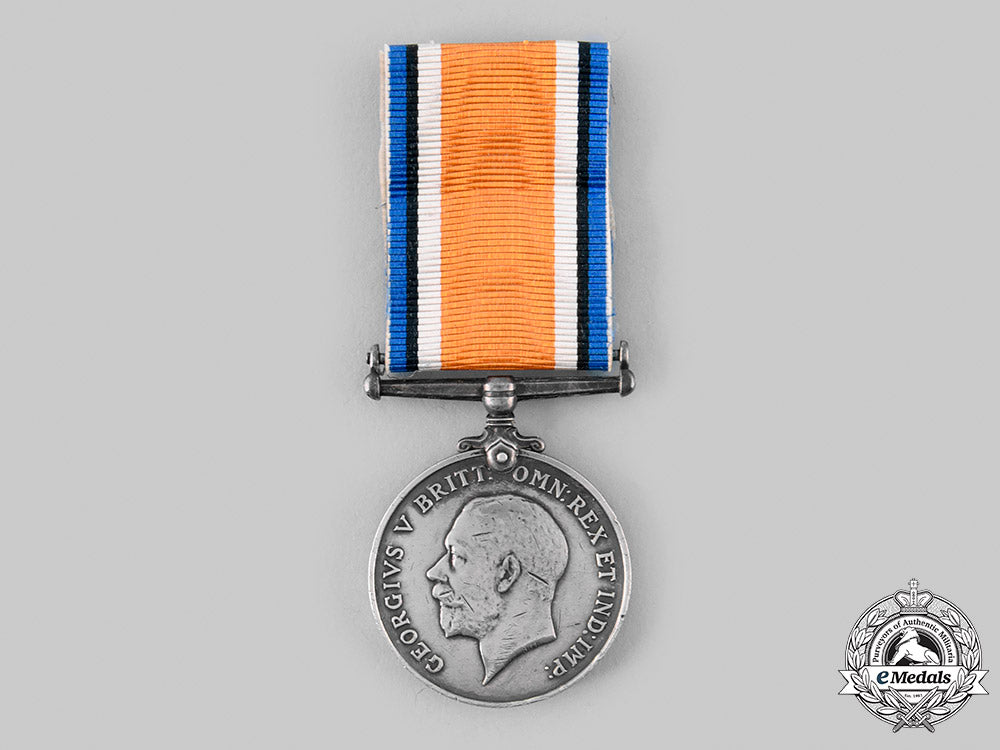
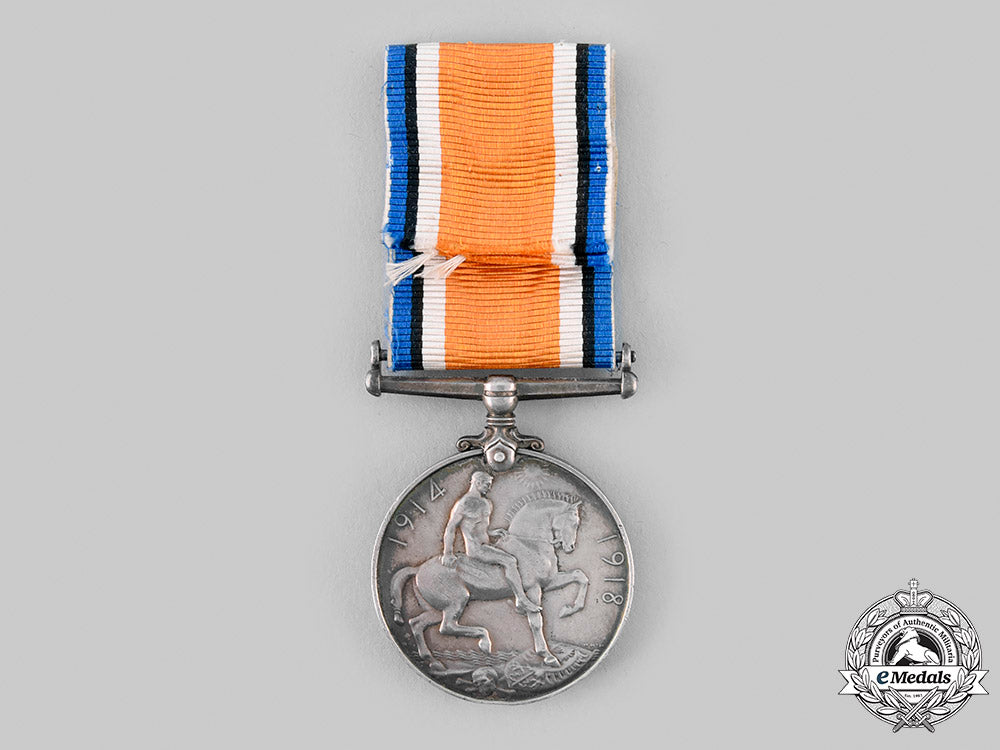
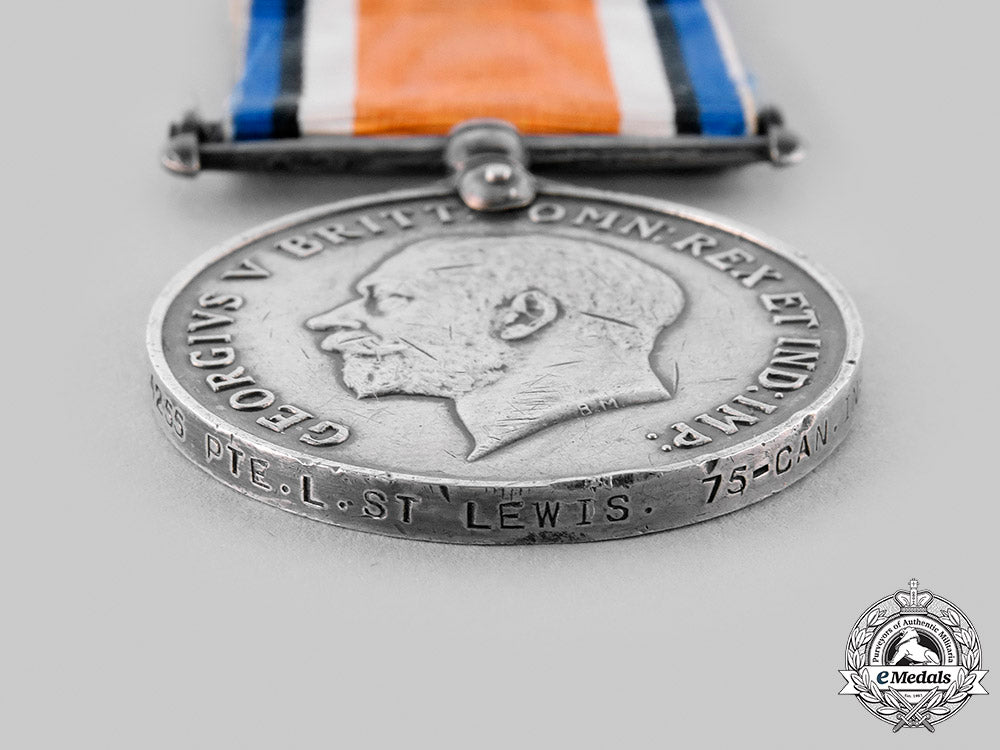
You May Also Like
Germany, SA. A Model 1933 Service Dagger, SA-Gruppe Nordsee, by Friedrich von der Kohlen
G59818
Germany, SA. A Model 1933 Service Dagger, SA-Gruppe Pommern, by Gustav Wirth
G59816
Germany, Third Reich. A Mixed Lot of Tyrolean Marksmanship Badges
G52930
Germany, SS. An Estonian Waffen-SS Volunteer’s Sleeve Shield
G50381
Germany, SS. A Waffen-SS Sturmmann Sleeve Insignia
G52846
-
Germany, SA. A Model 1933 Service Dagger, SA-Gruppe Nordsee, by Friedrich von der Kohlen
G59818
Add to CartRegular price $980 USDRegular price $0 USD Sale price $980 USDUnit price / per -
Germany, SA. A Model 1933 Service Dagger, SA-Gruppe Pommern, by Gustav Wirth
G59816
Add to CartRegular price $980 USDRegular price $0 USD Sale price $980 USDUnit price / per -
Germany, Third Reich. A Mixed Lot of Tyrolean Marksmanship Badges
G52930
Add to CartRegular price $135 USDRegular price $0 USD Sale price $135 USDUnit price / per -
Germany, SS. An Estonian Waffen-SS Volunteer’s Sleeve Shield
G50381
Add to CartRegular price $150 USDRegular price $0 USD Sale price $150 USDUnit price / per -
Germany, SS. A Waffen-SS Sturmmann Sleeve Insignia
G52846
Add to CartRegular price $135 USDRegular price $0 USD Sale price $135 USDUnit price / per
Do you have a similar item you are interested in selling?
Please complete the form and our client care representatives will contact you.
Sell Item
